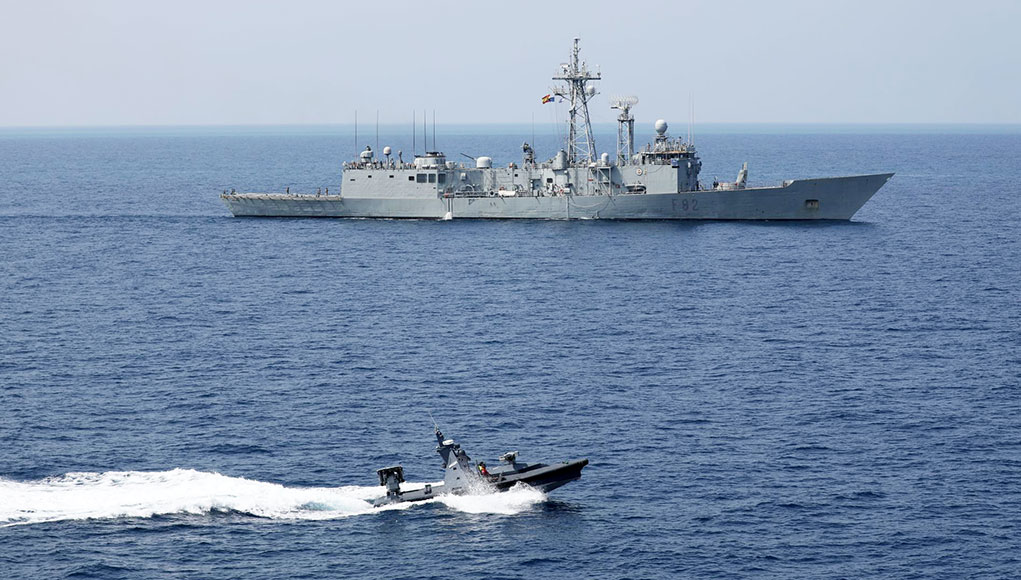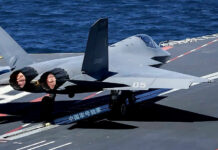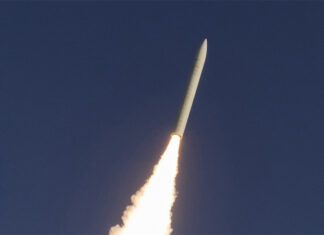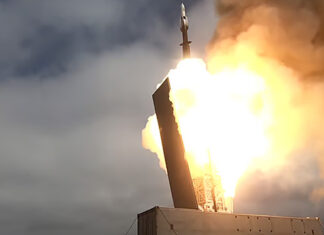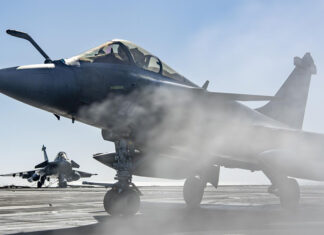Last month, after a short port visit at Haifa, two NATO warships joined with the Israeli navy on an exercise that involved the ‘Protector’ Unmanned Surface Vessel (USV) that demonstrated how such unmanned boats can assist large vessels in repelling attacks by swarms of fast boats.

The vessels were Royal Navy destroyer HMS Duncan (D37) and Spanish navy frigate ESPS Victoria (F82). The ships are part of Standing NATO Maritime Group 2 operating in the Eastern Mediterranean. The exercise took place along the shores of Israel was part of an operational demonstration of the capabilities of the USV against fast boats swarm threats. The demonstration included a simulated firing of Spike electro-optically guided missiles to neutralize the threat from extended range.
As the exercise unfolded, the NAT vessels spotted a large number of hostile vessels rapidly advancing towards it. The ship determined the threat to be a swarm attack and communicated the situation to headquarters, which scrambled the Israeli USV. The Protector raced from the shore at high speed and was able to identify the threat from a long distance. Once targets were prioritized an order was given to neutralize one of the threats, and the Protector crew followed with a simulated firing of a SPIKE missile.

“This scenario emphasizes the need to handle the threats emanating from terror and criminal activity, that naval forces are facing around the world'” said Moshe Elazar, EVP and Head of the Land and Naval Systems Division at Rafael. “The demonstration illustrated some of the capabilities that can be applied by the Protector in a wide range of operational scenarios, including defeating swarm attacks. These capabilities are a significant force multiplier for the naval forces, from the stage of detection, deterrence and, if necessary, neutralization of the threat, as was seen in the demonstration.”
Rafael’s “Protector” is in operational use with the Israeli Navy and a number of foreign naval forces. The Protector has been in use since 2004, allowing its developers and engineers to accumulate vast experience to continue its spiral development.
In March 2017, Rafael completed a series of successful tests in which a number of SPIKE ER missiles were launched from the Protector and hit simulated enemy targets. This was the first-ever missile firing from an operational, remote-controlled USV. This new capability allows pin-point attack of land or naval targets, enabling safe vessel operation from, with no risk to the operating force, from a remote command and control room or from aboard other naval platforms.
That test finalized the operational integration process of Protector’s entire suite of mission components to form four mission modules, including force protection and anti-terror, by employing a stabilized weapon station – Mini-Typhoon, a water cannon, non-lethal means, EW systems for protection and escort of naval vessels, Mine Counter-Measures to deal with the spreading threat of mines against sea lines of communication, Toplite electro-optical long-range detection and tracking systems, as well as Rafael’s Spike missiles, all remotely-operated.

